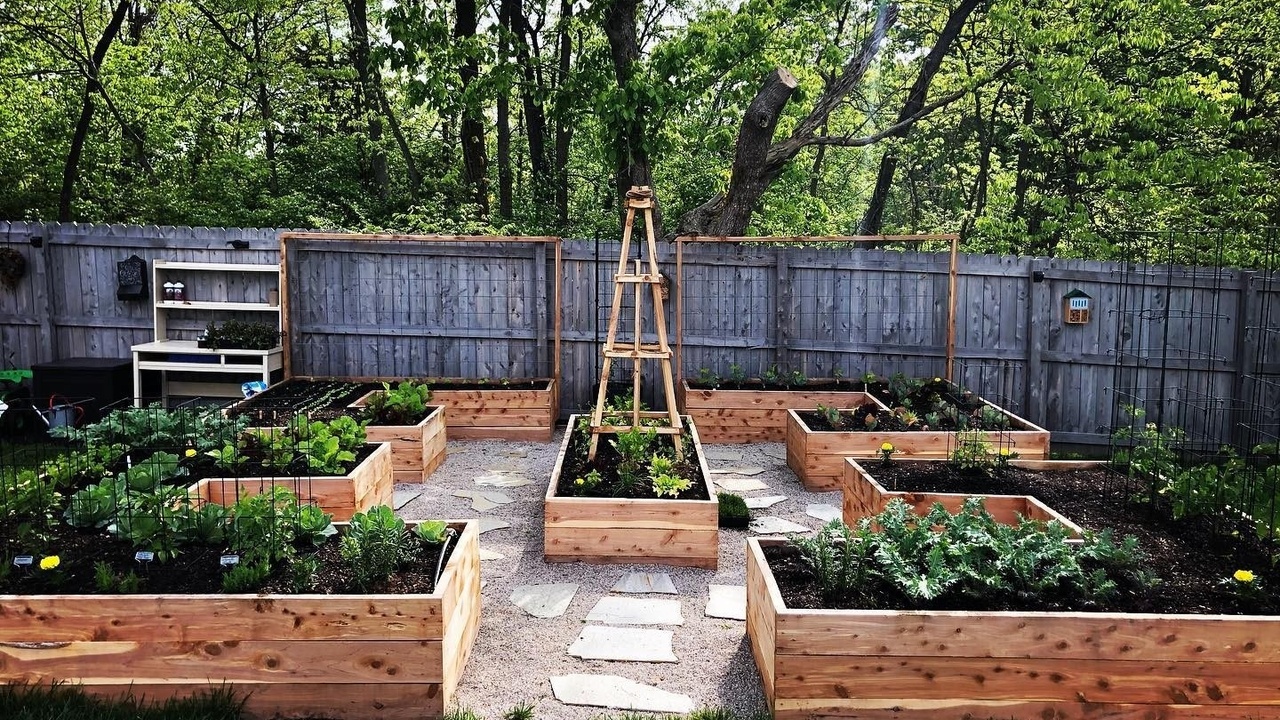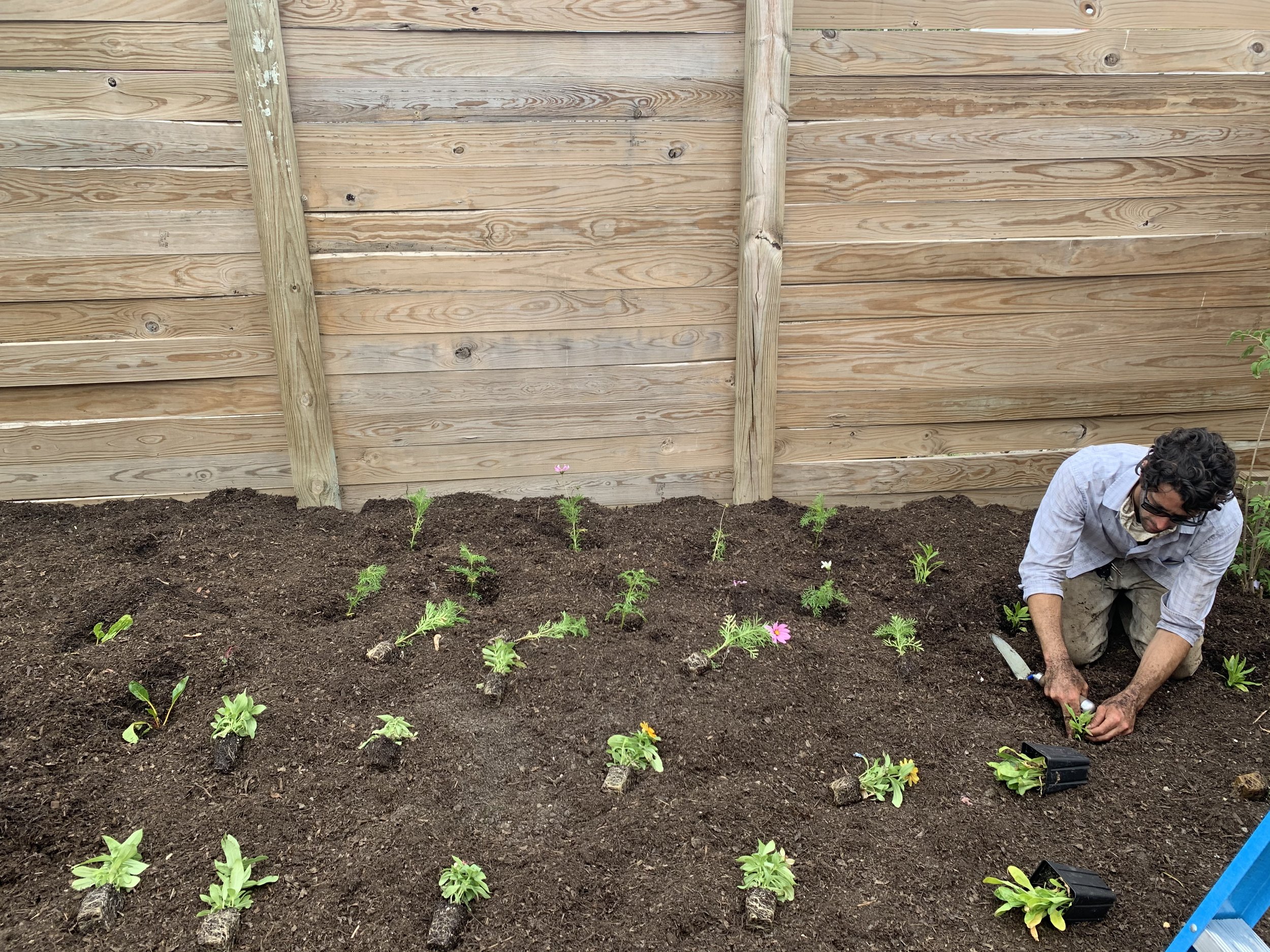
Watch our free class on how and where to source quality foodscaping plants
Story by Lindsay Wolff, The Foodscaper
In the permaculture and edible landscaping world, there seems to be a growing misconception.
A major tenant of the design science of permaculture is that good design mimics nature. Some seem to think that if you just build out the design, and it’s all hands off from there.
This perception is a disservice to the foodscaping community because it just aint the truth.
After listening to a recent podcast (which we will not name!), we were struck by how an edible landscaping business owner touted how simple it is to grow a permaculture orchard. “Plant some fruit trees and nature will do the rest!” he claimed. To us, it sounded like the advice of someone who has yet to actually get their hands dirty doing the work of maintaining an edible landscape.
Foodscape caretaking at any scale requires a significant amount of physical and intellectual work.

It’s why perhaps most homeowners in America have opted for the ease of a lawn. Grass lawns are simple to maintain, require minimal physical output and can be chemically managed to control weeds. Managing an edible landscape requires more energy, knowledge, and focus than a cigar-smoking cruise in a riding lawn mower.
There’s the slow and methodical process of year-round observation, the upfront planning of creating growing beds, pathways and water management strategies, the financial investment poured into tools, compost, mulch, materials and plants.
There’s the library of books to read, podcasts to absorb, and mentors to follow.
There’s the physical labor of planting, maintenance and harvesting.
Yes, it’s work. But caring for an edible landscape is also joyful, connective and therapeutic - and that’s why we do this sacred work.
Let’s push back a bit on the idea of “work.” There’s an assumption that horticultural work only means hard labor, long days and aching bodies. And that can certainly be true.
But even before choosing to pursue an edible landscape, you may want to ask yourself: What does work mean to me? What caretaking tasks will feel burdensome to me and which will feel enjoyable?
If learning about the specific needs of each plant feels like a drag, you’re creating more work for yourself with an ultra-diversified landscape. If plant ID is a passion of yours, remembering the nuances of each plant will feel like a fun hobby.
The work of foodscaping can be part of a healthful, vibrant lifestyle.
When we compartmentalize “work” tasks and other activities that feel like play, relaxation or pleasure, it’s as if the two can’t coexist. Yet, to use another permaculture principle, when we can “stack the functions” of edible landscaping maintenance, work and play can happen in tandem.
A weekend of building berms can double as a high intensity cardio workout.
Sheet mulching with friends (beers included) takes the place of going out to a costly social event.
Meaningful conversations can naturally arise while picking blackberries with your teenagers.
Gallery: A before-and-after series from Custom Foodscaping of their edible landscaping installation at The Royale, a restaurant in St. Louis, Missouri.
It’s time to reframe the energy inputs required to maintain a flourishing edible landscape. Here are some of the life-affirming benefits of foodscaping:
1. Sourcing food from your backyard is a radical act.
When we can depend on our own food-producing landscapes for our calories, we’re cutting out the fossil-fuel burning systems required to transport, package, and deliver grocery store produce.
2. Foodscaping is a spiritual practice.
Anything that connects us with nature, loved ones, fresh air, and nutritious food at the same time is time well spent. And is there anything better than sharing a homegrown meal with loved ones?
3. Sun and soil exposure is free medicine.
Regular, sun-soaked time spent in any diverse ecosystem creates biological harmony in the body and mind, lowering blood pressure and stress hormone levels while boosting the immune system. As we breathe in and soak our hands into nutrient-dense soil, we make contact with beneficial bacteria and we now know that healthy soil leads to a healthy gut. Any who hasn’t felt stress melt away after just a few minutes in the garden?
4. Families who foodscape together grow together.
A favorite image of the sweetness of foodscaping with family comes from Shades of Green founder Brandy Hall, who tells of how her client found her a child eating strawberries alongside a rabbit...who was also eating the strawberries. Amazing! The foodscape is an enchanting classroom for teaching kids about how they fit into the vast web of life. Plus, teaching kids the hard work involved in harvesting a single tomato is a powerful lesson in understanding where food comes from way beyond a trip to the grocery store.
5. Stop exercising and start moving
To tend to an edible landscape is to ditch your gym membership. The work of biomechanist and Move Your DNA author Katy Bowman skillfully teaches how to expand movement way behind what we think of as “exercise” (30 minutes at the gym, say) to include more functional, needed-in-nature movements like squatting, walking, and carrying heavy loads -- all movements utilized in the foodscape, and all movements that trace back to our hunter-gather lineage.
6. Challenge Your Mind
Planting, caretaking and observational skills are just as intellectual as they are physical. Attuning yourself to the cycles and patterns of your unique microclimate is a practice that will make any life-long learner continually curious and challenged. Your creative muscles are worked everytime you conceive an idea for your foodscape, create a design and see it through to fruitful completion.
Foodscaping requires work - but you don’t have to do it alone!
You can hire a foodscaper professional to help you with your design, installation and maintenance work. Check out our International Foodscaper Directory - and if you don’t see a foodscaper company listed near you, reach out to us at [email protected] to get connected to someone who can help you virtually.





